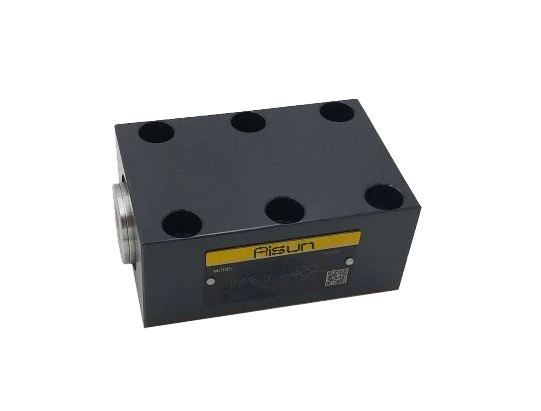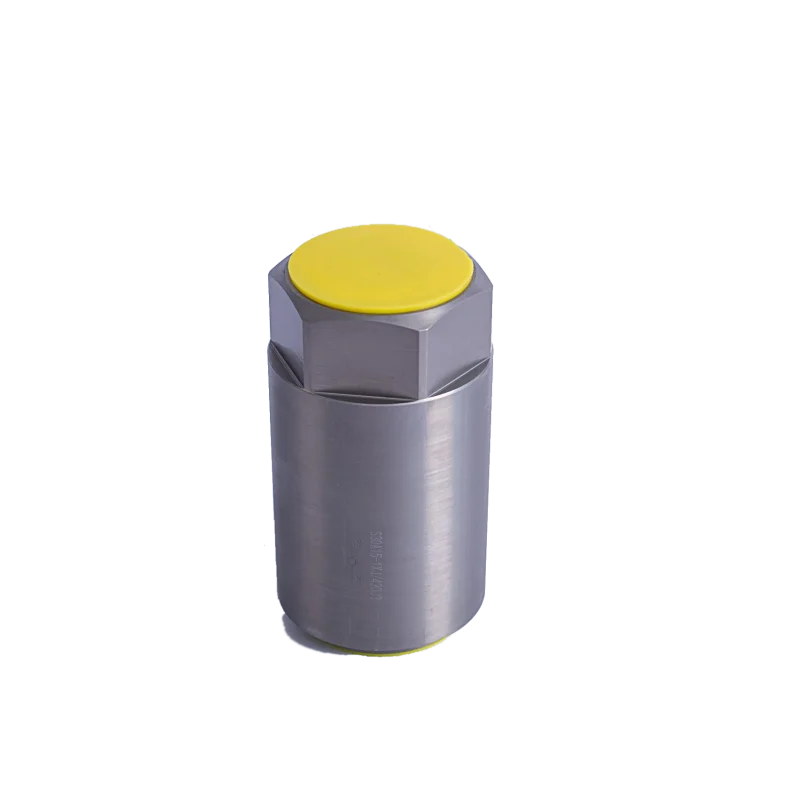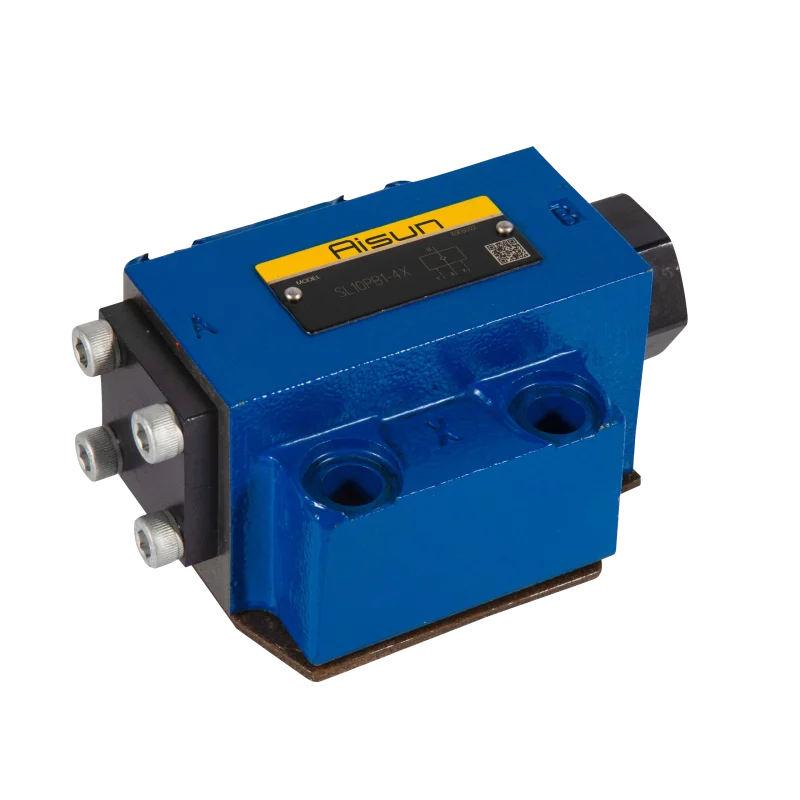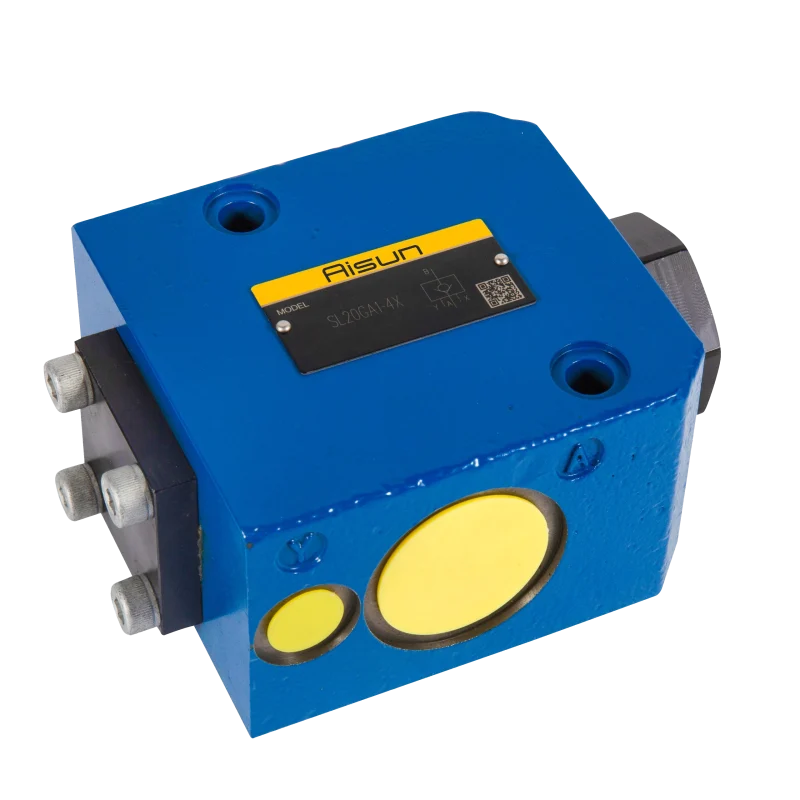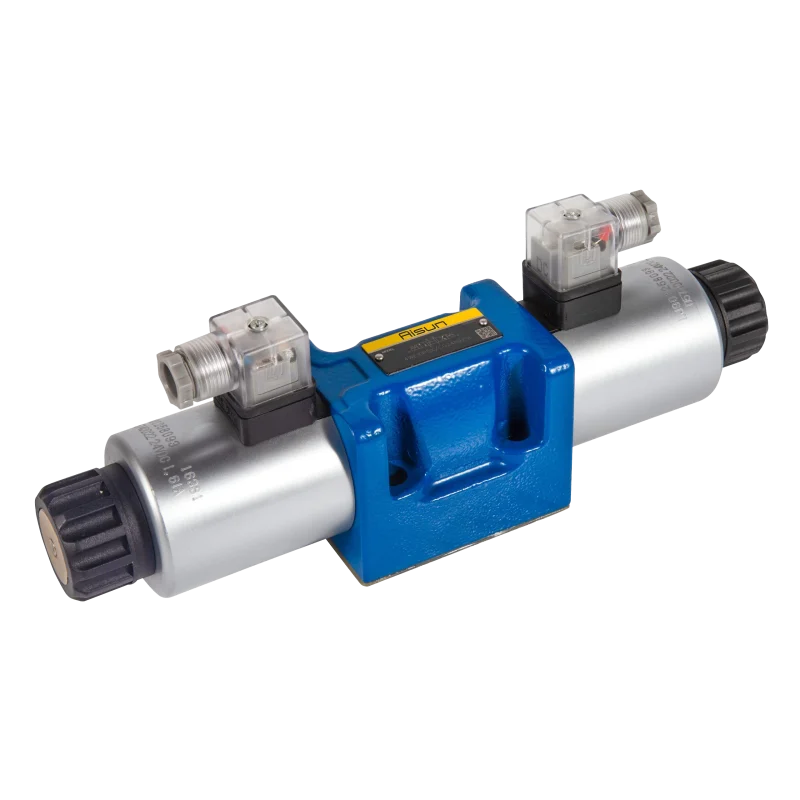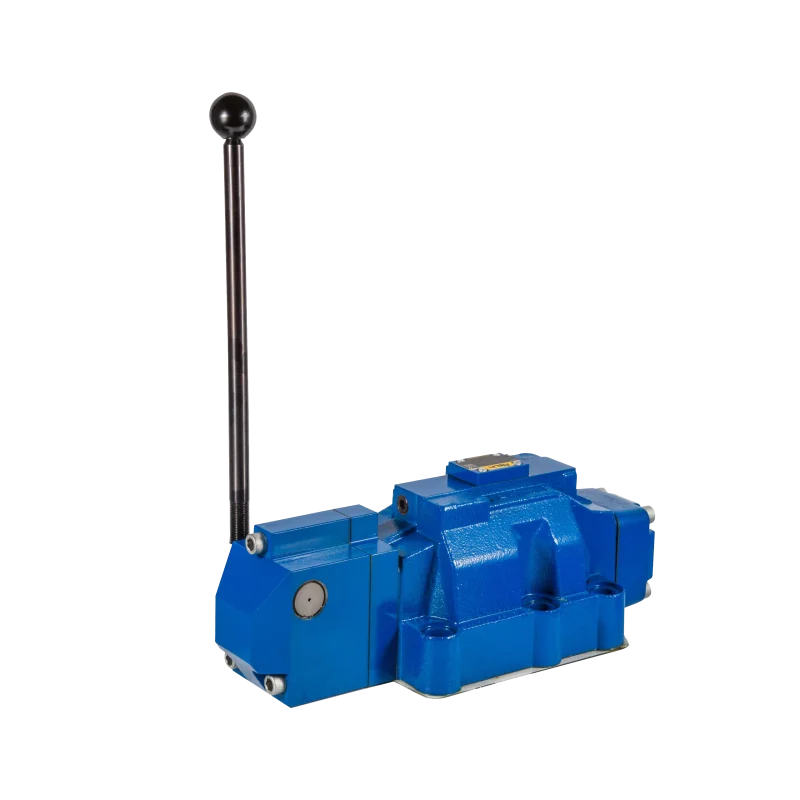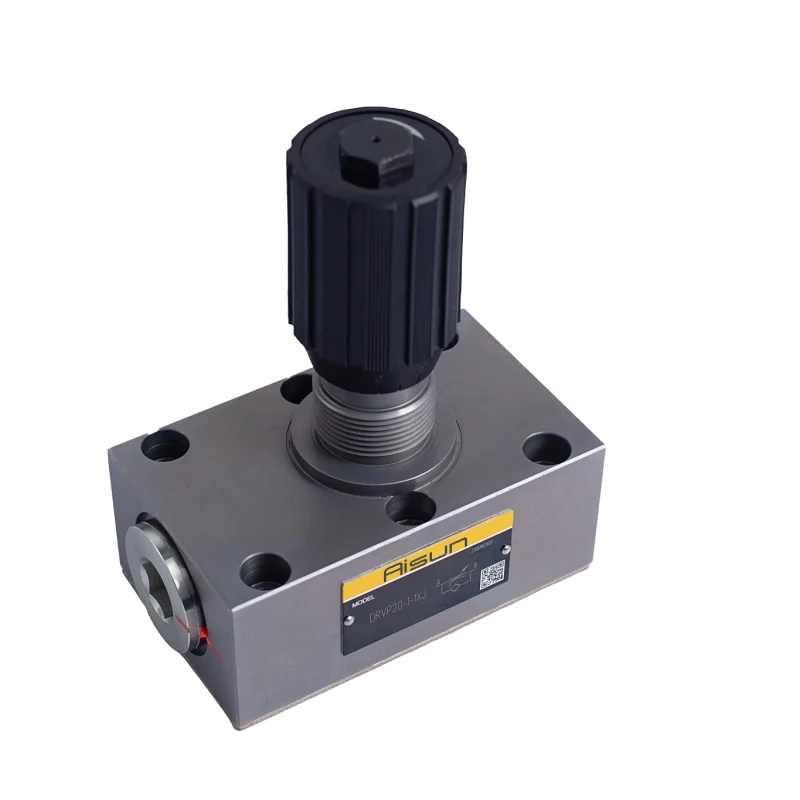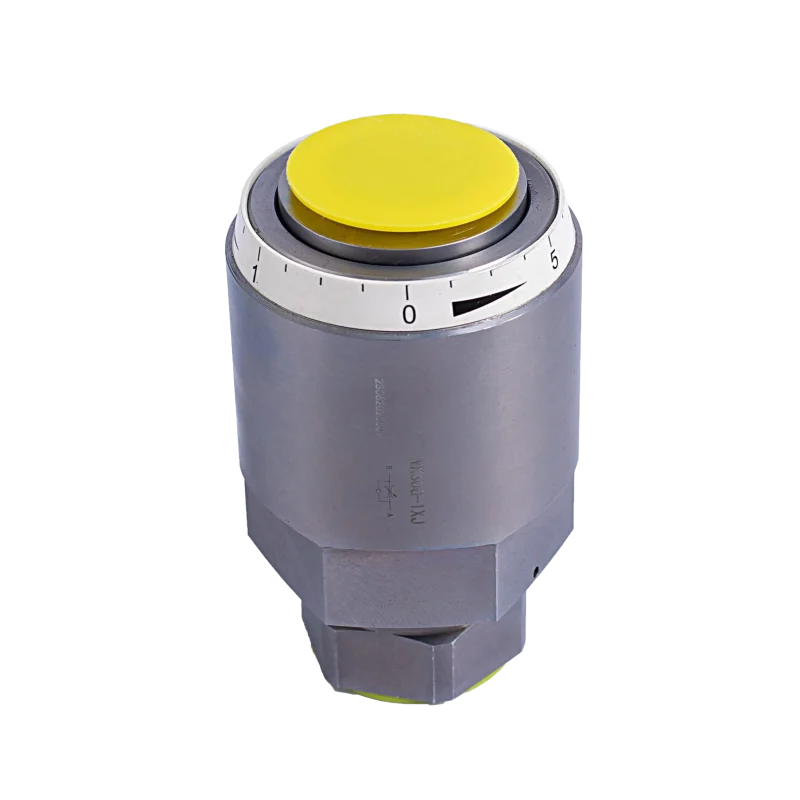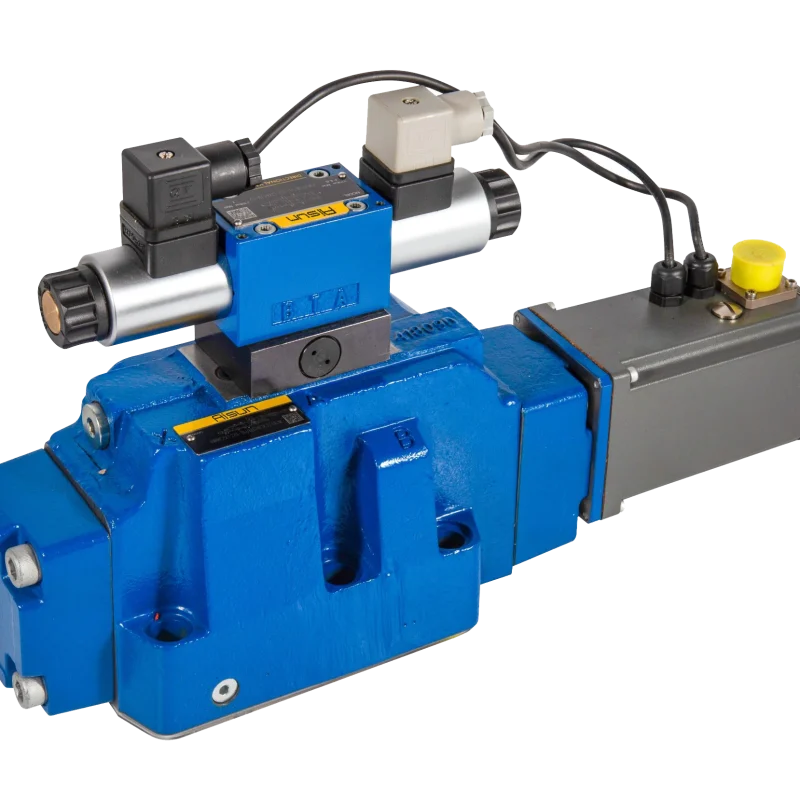-
Check Valve RVP
Price range: $66 through $229Check Valve RVP
Applications in Hydraulic Systems: The RVP type check valve finds widespread utility in hydraulic systems, primarily at the outlet of pumps. Here, it serves a dual purpose as a back pressure valve and bypass valve. As a back pressure valve, it helps regulate the pressure within the hydraulic circuit, ensuring optimal performance and preventing potential damage due to excessive pressure. Simultaneously, its role as a bypass valve allows for the controlled diversion of fluid when needed, adding flexibility to the hydraulic setup.
-
check valve s
Price range: $8 through $38check valve s
A check valve, also known as a non-return valve or one-way valve, is designed to allow fluid to flow in only one direction through a pipeline. This valve is crucial for preventing backflow, which is the reverse flow of fluids that can lead to contamination and inefficiency in the system. Historically, it have been utilized since ancient times, primarily in water control for irrigation systems. Their design and functionality have evolved significantly, making them indispensable in modern industries such as oil and gas, chemical processing, water treatment, and HVAC systems .
-
Check Valve Sl
Price range: $7 through $206Check Valve Sl
The Aisun Model SL check valve is a high-performance hydraulic valve designed to prevent the reverse flow of fluid in a hydraulic circuit. It allows fluid to flow in one direction while automatically blocking any fluid flow in the opposite direction. This prevents damage to pumps, motors, and other components in the system that could be caused by backflow.
-
Check Valve Sv
Price range: $62 through $209Check Valve Sv
The Aisun Model Sv check valve is a high-performance hydraulic valve designed to prevent the reverse flow of fluid in a hydraulic circuit. It allows fluid to flow in one direction while automatically blocking any fluid flow in the opposite direction. This prevents damage to pumps, motors, and other components in the system that could be caused by backflow.
-
Directional Solenoid Valve 4we
Price range: $71 through $124Directional Solenoid Valve 4we
The 4WE Hydraulic Solenoid Directional Valve is a directional spool valve operated by the solenoid. It controls the opening, closing, and flow direction of the liquid flow. Features:
With the direct type solenoid operated directional spool valve as the standard type
Wet-pin DC or AC solenoids with detachable coil
The solenoid can be rotated by 90°
Replace the coil without releasing the oil
Individual or central electrical connection, optional
Optional manual emergency operation
The control input device of the Hydraulic Solenoid Directional Valve is a switching electromagnet, and the thrust generated when the electromagnet is energized makes the valve core do relative movement in the valve body to realize the reversing. The control signal of the solenoid valve can be directly controlled by the signal sent by the button switch, the stroke switch, the pressure relay and other components, and can also be controlled by the signal sent by the computer, the programmable controller and other control devices, which is convenient and widely used. -
Directional spool valve WMM
Price range: $30 through $400Directional spool valve WMM
In the dynamic world of hydraulic systems, precise control over fluid flow is paramount. The WMM manual valve, specifically the manual directional valve, emerges as a crucial component that allows operators to seamlessly switch oil circuits through manual manipulation. This article aims to delve into the design intricacies, operational mechanisms, and diverse applications of the WMM series, shedding light on its pivotal role in hydraulic engineering.
WMM Manual Valve Overview: The WMM manual valve is a direct-operated directional spool valve designed to facilitate the switching of oil circuits by manually rotating the handle to axially move the spool. This versatile valve comes in 3/2-way, 4/2-way, and 4/3-way configurations, featuring various spool symbols.
The WMM series manual valve is renowned for its robust construction and reliable performance. Its design ensures efficient control over the flow of hydraulic fluids, making it an indispensable component in a wide range of applications. The valve body is made of high-quality materials, such as cast iron or aluminum alloy, which provide excellent durability and resistance to wear and tear. This ensures that the valve can withstand harsh operating conditions and maintain its functionality over a prolonged period.
-
Directional spool valves 4WEMM
Price range: $168 through $194Directional spool valves 4WEMM
Applications in Hydraulic Systems: WEMM type directional spool valves find applications in scenarios where manual actuation is essential, especially during emergencies. The combination of solenoid operation and auxiliary handle control provides flexibility in fluid flow control, catering to diverse hydraulic system requirements.
In conclusion, the WEMM type directional spool valves represent a crucial advancement in hydraulic engineering, offering precise control with both solenoid and manual actuation options. Their versatile design and applications make them indispensable components in hydraulic systems, ensuring reliable performance and emergency response capabilities. As technology continues to evolve, these valves play a vital role in enhancing the efficiency and adaptability of hydraulic systems across various industries. Engineers and practitioners must grasp the intricacies of WEMM type valves to harness their full potential and contribute to the evolving landscape of hydraulic technology.
-
Electro-Hydraulic Directional Valves WEH
Price range: $100 through $632Electro-Hydraulic Directional Valves WEH
WEH Series – Electro-Hydraulic Directional Spool Valve: The WEH series represents a class of directional spool valves featuring Control Valve electro-hydraulic operation. These valves take command of the initiation, cessation, and direction of fluid flow within hydraulic circuits. The core components include the main valve body, main valve spool, one or two return springs, and the pilot valve equipped with one or two solenoids.
Features
- -Control Valve Electro-Hydraulic Operated
- – Valves used to control the start, stop and
- direction of a fluid flow
- – Electro-hydraulic operation (WEH)
- – Hydraulic operation (WH)
- – Subplate mounting
- porting pattern conforms to DIN24340 form A and ISO4401
- – Spring or pressure centered, spring or hydraulic offset
- – Wet pin DC or AC solenoids, optional
- – Hand override, optional
- – Electrical connection as an individual or
- central connection
- – Shifting time adjustment, optional
- – Pre-loading valve in the P-channel of the main valve, optional
- – Auxiliary equipment to data sheet
- – Stroke adjustment at main spool, optional
- – Stroke adjustment and/or end position indicator, optional
- Mechanical or inductive limit switch
- (proximity type) at the main spool
-
Flow Control Valve 2FRM
Price range: $103 through $248Flow Control Valve 2FRM
Hydraulic Valve Flow Control Valve Model: 2FRM
- Size 10 to 16
- Maximum working pressure 315 bar
- Maximum working flflow 160 L/ min
- Optional pressure compensator
- stroke limiter
- Start-up jump reduction
- Lockable knob
- Flow control in both direction by means of current stacking plate
-
Flow control valve DV
Price range: $150 through $310Flow control valve DV
The DV(P)/DRV(P) type flow valves, also known as (Check) Restrictor Valves, are essential flow control valves in hydraulic systems. These valves are specifically designed to regulate the speed of actuators with precision and simplicity. Additionally, they can function as shut-off valves when fully closed, adding to their versatility in hydraulic applications.
The design of the DV(P)/DRV(P) Flow back valves includes a triangular scale that visually represents the flow adjustment. The size of the triangle on the valve scale corresponds to the flow rate, providing a quick and intuitive way to assess the fluid flow magnitude. This visual cue is crucial for operators and system engineers to accurately gauge and control hydraulic flow. -
Flow Control Valve MG & MK
Price range: $98 through $123In the field of hydraulic engineering, precise control over fluid flow is paramount for ensuring optimal performance. The MG and MK valves, as restrictive valves, play a crucial role in achieving this control. With a strong emphasis on oil pressure and viscosity, these valves provide a reliable solution for controlling fluid flow in hydraulic systems. This article will delve into the design intricacies, operational mechanisms, and various applications of the MG and MK valves, highlighting their significance in hydraulic engineering.
Restrictive Valve
The MG model is specifically designed as a restrictive valve capable of throttling fluid flow in both directions. Its design features a side hole (3) through which hydraulic oil passes, reaching the throttling orifice (4). This critical component is formed by the valve body (2) and the adjusting sleeve (1).
Similar to the MG valve, the MK valve is another exemplary restrictive valve utilized in hydraulic systems. It shares a common focus on oil pressure and viscosity, ensuring accurate control over fluid flow. -
hydraulic Proportional Directional valves 4WRKE
Price range: $1.642 through $2.687Proportional Directional valves 4WRKE
In the field of fluid power control, the Electro-Hydraulic Proportional Directional Valve (EHPDV) is a critical component that plays a vital role in regulating the flow and direction of hydraulic fluids. Among the various types of EHPDVs available, the 4WRK… stands out as a high-performance, two-stage proportional directional control valve. This valve offers precise control over flow size and direction, making it an ideal choice for applications requiring accurate hydraulic control.
The 4WRKE type proportional directional control valve comprises several key components, including the pilot control valve, housing, main spool, covers, centering spring, inductive position transducer, and pressure reducing valve. Each component serves a specific purpose in ensuring the valve’s smooth operation and precise control over fluid flow.

